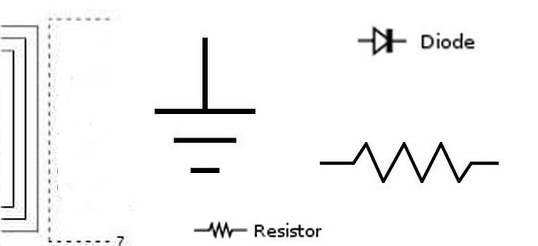ASE Automotive Electrical / Electronic Systems Test Taking Tips
April 29, 2012 9:47 am ASE Test, ASE Test Info© DenLorsTools.com Summary: I just re-certified my electrical ASE (Automotive Service Excellence) test to maintain my Master Tech status. Here’s some key points that I remember from making a few notes immediately after taking the test and returning to my vehicle. I admit that “electrical” is not my strong suite, however I didn’t need a study guide. This was the 4th time I’ve successfully re-certified this particular test. I’ve also included a few tips on what I’ve learned when taking ASE’s electrical tests over the years.
Not surprising, the majority of the ASE electrical test questions are based on wiring diagrams. If you are not already familiar with reading wiring diagrams and know the symbols well, I recommend ordering a study guide. Some of the best ASE study guides that I’ve used in the past were put out by Mitchell .
Brush up on how the diagrams flow, what the symbols look like. Be prepared to determine where the power source is coming from and be sure to know how to identify a shielded wire. A shielded wire is usually indicated by a dashed line (like #7 in the image above). Also on just about every electrical test I’ve taken there’s always a question that asks “what type of soldering wire should be used?”. It’s Rosin core. Rosin core will not corrode like some of the other types of soldering wire. Familiarize yourself with multimeter readings. Know what an open circuit reading is etc.
By using a good ASE study guide and reviewing multiple choice questions, you get back into the “groove” or way of thinking that is needed to understand what the test questions are asking. This helps in understanding the feel of the questions and what they’re looking for.
Turn Signal Blinks Too Quickly – Use Your Experience
Don’t overlook common sense and practical application. Getting too wrapped up in a diagram when you know what the common issue is with a particular problem can sometimes be a mistake. You have to take what the test question is asking in consideration, along with possible answers given and ALSO use your personal experience with common problems. For instance; If a turn signal is flashing too fast on one side or the other, you should already know without looking at a wiring diagram that it’s not because of a blown fuse! Eliminate the answers that are least likely to be at fault, until you are left with the most likely cause of the problem. No, they are not going to make it too easy. One of the multiple choices is NOT going to be a blown bulb. Although a blown turn signal bulb is the most common cause of the turn indicator flashing too quickly (on one side) in real-diagnosis situation. There may be possible answers on the test like an “open or shorted flashers”. On my test the correct answer was “the technician installed an incorrect bulb” which caused an open circuit and the one side to blink too quickly.
Starter Won’t Crank Engine Over – Process of Elimination
I hate when an ASE test question doesn’t provide all the information needed to answer the question properly. It’s kind of like a car owner telling the service writer in vague terms, what their car’s problem is and expecting the technician to diagnose the problem right away! If only car mechanic’s could have a crystal ball and a magic wand in their box. At least with customers, you can ask more questions. Service writer’s are you getting this?
With ASE test questions, you are allowed NO follow-up questions for clarification. Therefore, it’s best to cull out the least likely answers until you are left with the best choice remaining. One of the questions that I had on the ASE electrical test was worded something like “Why doesn’t the starter crank the engine?”. Multiple choice options were A. Bad starter. B. Bad switch. C. Open circuit in solenoid. D. Mechanical failure.
If I were speaking with the customer I would have follow-up questions and have the benefit of checking the vehicle out, in person. Since that’s not the case, I had to study the question and select the answer I thought they were looking for. Sometimes the best way to find the answer is to ask yourself, which one of these is unlike the others? Since a bad starter, a bad switch, an open circuit in a solenoid could all cause basically the same problem with the starter NOT doing anything or making any noise; I concluded that a mechanical failure was what they were looking for. I think they were trying to make the point “to not overlook” mechanical issues and jump straight to electrical diagnosis.
Hopefully some of the tips included here and on my previous article on ASE computer formatted tests, will help some of you pass the ASE electrical test. I will be reviewing these pages myself in another five years when mine is due to be renewed again!
